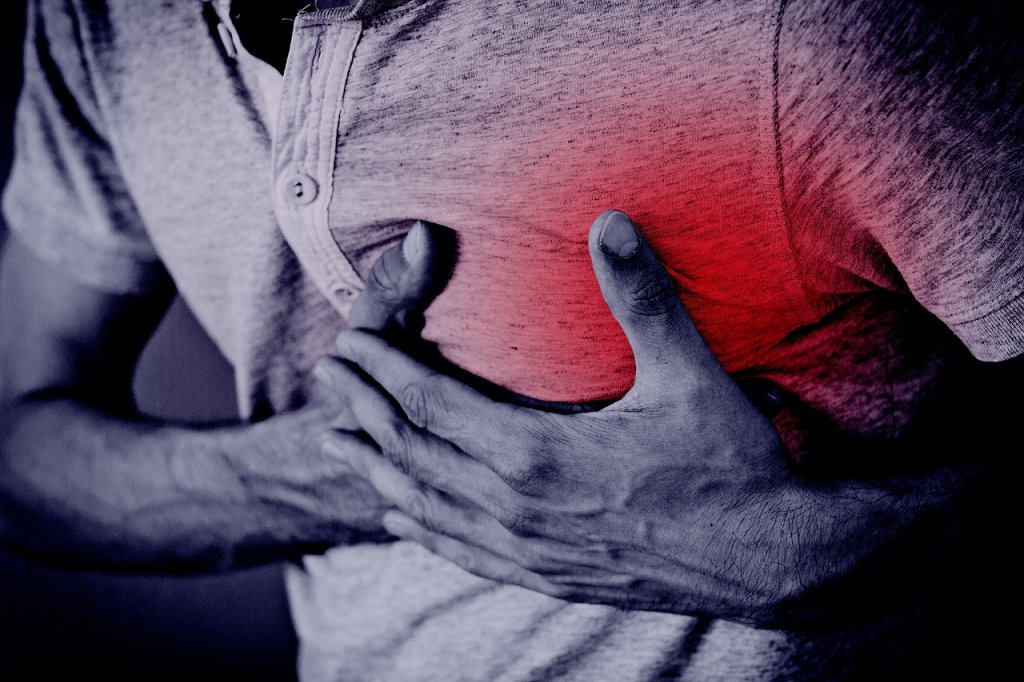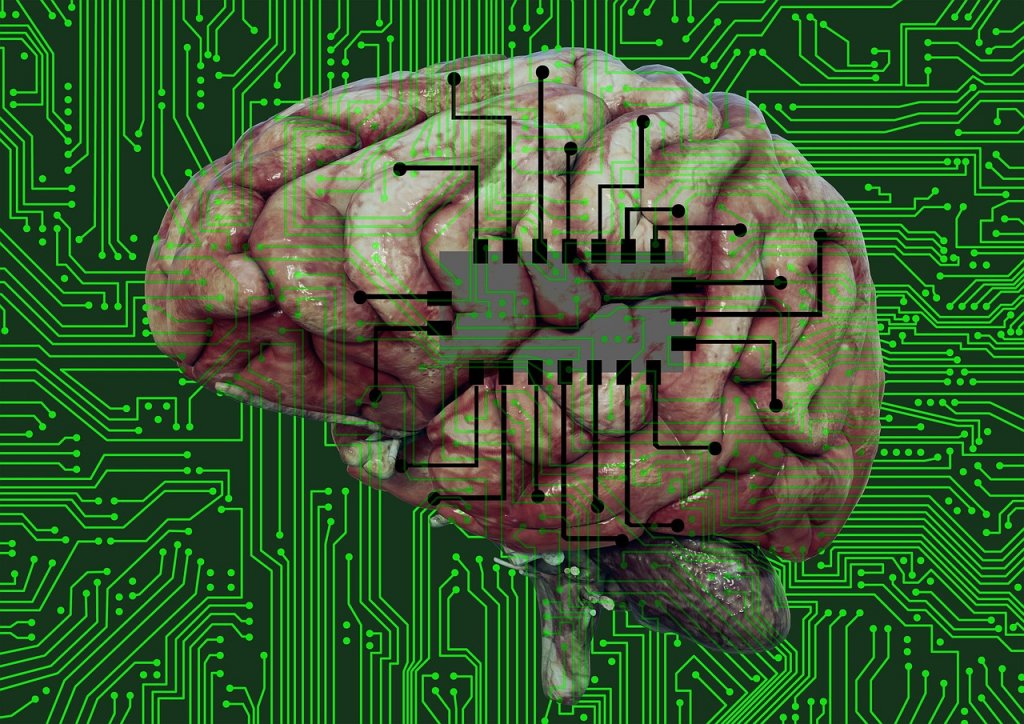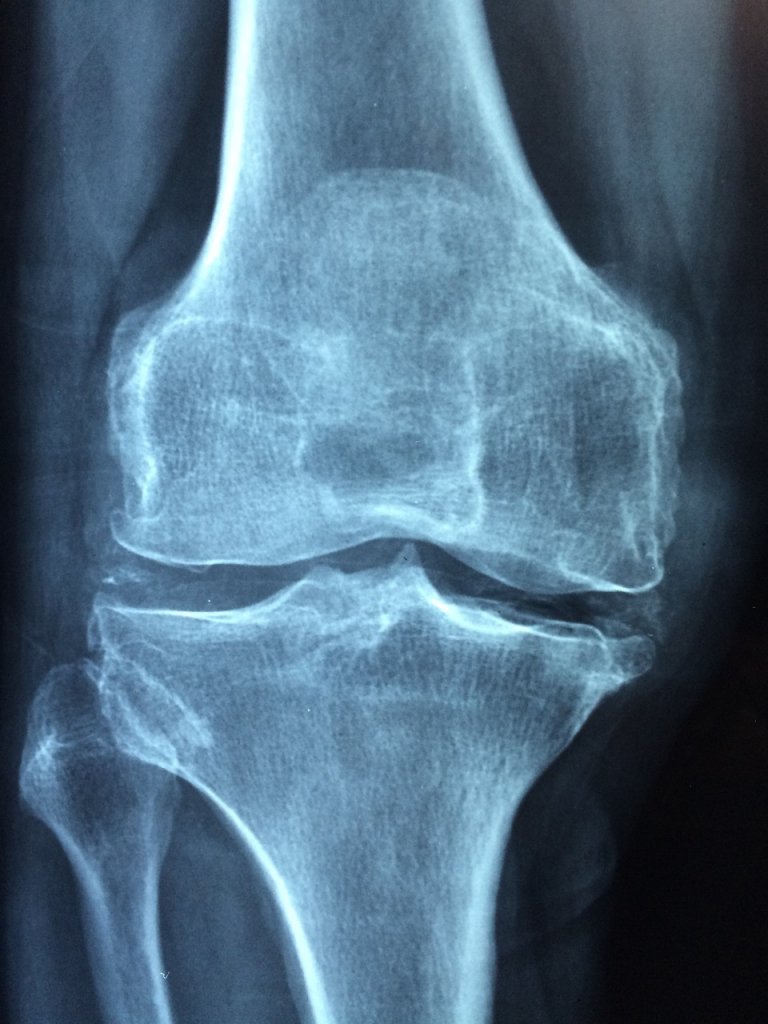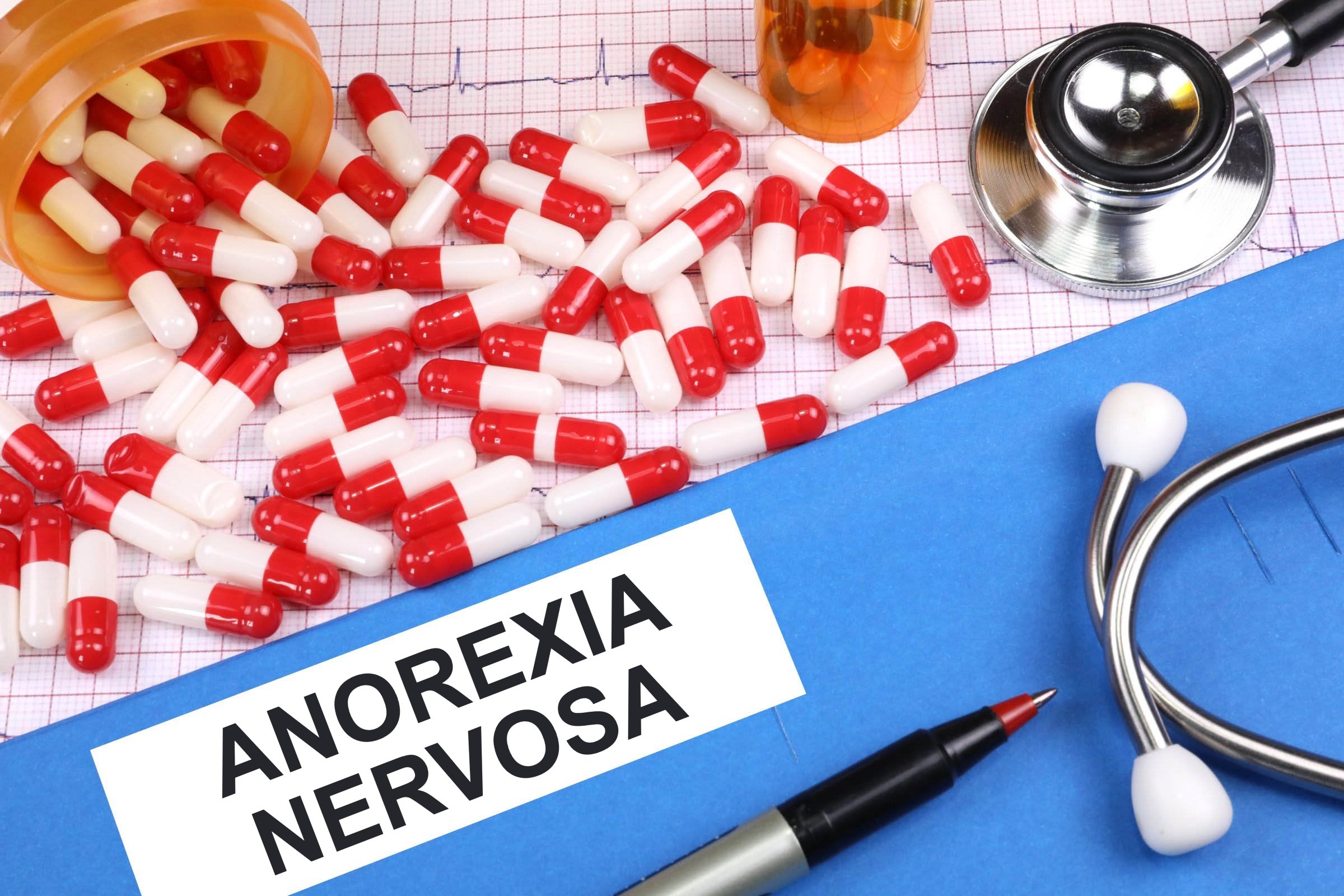Anorexia nervosa is a dietary issue described by outrageous dietary limitation and a misshaped self-perception, which influences actual wellbeing as well as influences mental prosperity. Understanding the drawn out wellbeing impacts of anorexia nervosa is vital for early intercession and treatment, possibly relieving difficulties and further developing results. It enables medical services suppliers, families, and people to perceive advance notice signs and look for suitable help.
Anorexia nervosa is something other than a longing to be meager; it is a complex psychological wellness problem with diverse starting points. People with anorexia frequently see themselves as overweight, regardless of being essentially underweight. This misshaped self-perception drives them to take part in outrageous dietary propensities, like calorie limitation, unnecessary activity, or cleansing ways of behaving. The problem commonly appears during pre-adulthood or youthful adulthood and excessively influences females.
The specific reasons for anorexia nervosa are intricate and multifactorial, including hereditary, natural, mental, and sociocultural elements. Hereditary inclination, synapse lopsided characteristics, compulsiveness, low confidence, injury, and cultural tensions to accomplish an unreasonable body ideal add to its turn of events.
Actual wellbeing chances incorporate unhealthiness and starvation, hormonal lopsided characteristics, electrolyte unsettling influences, gastrointestinal intricacies, cardiovascular irregularities, and metabolic dysregulation. Mental outcomes incorporate extreme feelings of dread toward putting on weight, body dysmorphia, and a distraction with food, calories, and body shape. Socially, anorexia nervosa can strain associations with loved ones, prompting disengagement and withdrawal. Slander and cultural tensions propagate sensations of disgrace and deficiency, further compounding the singular’s pain.
Treatment for anorexia nervosa ordinarily includes a multidisciplinary approach, including healthful recovery, psychotherapy, medicine the board, and family-based mediations. The objective is to reestablish weight, address basic mental issues, and foster solid strategies for dealing with especially difficult times for overseeing pressure and feelings.
Contents
- 1 What is Anorexia Nervosa?
- 2 Physical Health Consequences
- 3 Heart:
- 4 Cerebrum:
- 5 Bones:
- 6 Psychological Health Consequences
- 7 Social and Interpersonal Consequences
- 8 Long-Term Health Risks
- 9 Cardiovascular Complications
- 10 Neurological Complications
- 11 Bone Health
- 12 Gastrointestinal Issues
- 13 Reproductive Health
- 14 Dental Health
- 15 Treatment and Management
- 16 Prevention Strategies
- 17 Conclusion:
- 18 FAQs:
What is Anorexia Nervosa?
Anorexia nervosa is a serious psychological well-being problem described by prohibitive dietary patterns, an extreme feeling of dread toward putting on weight, and a contorted self-perception. It goes past simple counting calories or worry about actual appearance; people with anorexia frequently see themselves as overweight, regardless of being fundamentally underweight. This contorted discernment drives them to take part in outrageous ways of behaving to control their weight, like seriously confining food admission, extreme working out, or utilizing different techniques to prompt weight reduction.

Definition and Demonstrative Criteria
As per the Symptomatic and Factual Manual of Mental Issues (DSM-5), the indicative standards for anorexia nervosa include:
- Restriction of energy consumption comparative with requirements, prompting a fundamentally low body weight for one’s age, sex, formative direction, and actual wellbeing. This is much of the time appeared by a refusal to keep a body weight that is insignificantly typical for their age and level.
- Intense dread of putting on weight or becoming fat, despite the fact that underweight.
- Disturbance in the manner one’s body weight or shape is experienced, unjustifiable impact of body weight or shape on self-assessment, or refusal of the reality of the ongoing low body weight.
Furthermore, there are two subtypes of anorexia nervosa:
- Confining type: People fundamentally limit their food admission and don’t routinely take part in pigging out or cleansing ways of behaving.
- Pigging out/cleansing type: People participate in gorging or cleansing ways of behaving (like self-actuated regurgitating or abuse of diuretics) as well as confining food consumption.
These rules are utilized by medical services experts to analyze anorexia nervosa and separate it from other dietary problems and emotional wellness conditions.
Pervasiveness and Demographics
Anorexia nervosa most normally creates during puberty or youthful adulthood, despite the fact that it can happen at whatever stage in life. It prevalently influences females, with gauges proposing that roughly 90% of those analyzed are ladies and young ladies. Notwithstanding, it’s vital to take note of that a rising number of guys are additionally being determined to have anorexia nervosa, featuring the significance of perceiving the issue across all socioeconomics.
The commonness of anorexia nervosa changes across various populaces and societies. While accurate commonness rates are hard to decide due to underreporting and disgrace related with dietary problems, studies propose that anorexia nervosa influences between 0.3% to 1% of juvenile and youthful grown-up females in Western nations. Notwithstanding, arising research demonstrates that the pervasiveness might increment worldwide, with an ascent in cases saw in non-Western societies too.
Factors adding to the advancement of anorexia nervosa are diverse and complex. Hereditary inclination, neurobiological factors, natural impacts, mental qualities (like compulsiveness and low confidence), and sociocultural tensions (like media depiction of slimness and cultural accentuation on excellence goals) all assume a part in its beginning and propagation.
In synopsis, anorexia nervosa is a serious psychological well-being problem portrayed by prohibitive dietary patterns, feeling of dread toward weight gain, and misshaped self-perception. Its pervasiveness is most noteworthy among juvenile and youthful grown-up females, in spite of the fact that guys can likewise be impacted. Understanding the symptomatic standards and segment designs is significant for early acknowledgment and mediation in people battling with this crippling condition.
Physical Health Consequences
Anorexia nervosa is an extreme problem that essentially influences actual wellbeing, basically because of the serious lack of healthy sustenance it goes with. Drawn out starvation denies the collection of fundamental supplements, prompting a fountain of impeding impacts on different organ frameworks. The actual results of anorexia are sweeping and can have enduring ramifications for a singular’s prosperity.
Lack of healthy sustenance is a trademark element of anorexia nervosa, portrayed by an insufficient admission of calories, macronutrients (like carbs, proteins, and fats), and micronutrients (like nutrients and minerals). The body depends on these supplements to fuel physiological cycles, keep up with tissue trustworthiness, and backing by and large wellbeing. Without even a trace of sufficient nourishment, the body starts to separate its own tissues for energy, prompting a condition of catabolism.

The cardiovascular framework bears a huge weight in people with anorexia nervosa, as lack of healthy sustenance and electrolyte lopsided characteristics can prompt heart irregularities like bradycardia, hypotension, and arrhythmias. Constant starvation can debilitate the heart muscle, expanding the gamble of cardiovascular breakdown and unexpected heart passing. Moreover, electrolyte aggravations, especially potassium and magnesium lopsided characteristics, can encourage hazardous heart occasions.
The mind is especially powerless against the impacts of ailing health in anorexia nervosa, prompting mental weakness, memory shortages, and adjustments in cerebrum design and capability. Studies have shown that people with anorexia display diminished mind volume, adding to troubles in fixation, temperament aggravations, and weakened judgment.
Notwithstanding essential organs, other body frameworks might be impacted by the unhealthiness and physiological uneven characters related with anorexia nervosa, like the gastrointestinal plot, endocrine framework, and safe framework. Tending to these difficulties requires an extensive methodology that tends to both nourishing shortages and hidden mental variables driving the problem.
Malnutrition and Its Impact on the Body
Lack of healthy sustenance is a trademark component of anorexia nervosa and is described by an insufficient admission of calories, macronutrients (like carbs, proteins, and fats), and micronutrients (like nutrients and minerals). The body depends on these supplements to fuel fundamental physiological cycles, keep up with tissue respectability, and back generally wellbeing. In any case, without a trace of sufficient nourishment, the body starts to separate its own tissues for energy, prompting a condition of catabolism.
Effects on Vital Organs
Heart:
The cardiovascular framework bears a critical weight in people with anorexia nervosa. Lack of healthy sustenance and electrolyte lopsided characteristics can prompt cardiovascular anomalies like bradycardia (strangely sluggish pulse), hypotension (low circulatory strain), and arrhythmias (sporadic heart rhythms). Delayed unhealthiness can debilitate the heart muscle, expanding the gamble of cardiovascular breakdown and abrupt heart demise. Moreover, electrolyte aggravations, especially potassium and magnesium awkward nature, can accelerate perilous cardiovascular occasions.
Cerebrum:
The mind is especially defenseless against the impacts of lack of healthy sustenance in anorexia nervosa. Ongoing starvation can prompt mental hindrance, memory shortfalls, and adjustments in mind construction and capability. Studies have shown that people with anorexia display diminished cerebrum volume, especially in districts liable for direction, motivation control, and profound guideline. These neurological changes can add to challenges in focus, state of mind aggravations, and debilitated judgment.
Bones:
Osteoporosis, described by low bone thickness and expanded defenselessness to breaks, is a typical outcome of anorexia nervosa. Lack of healthy sustenance upsets ordinary bone rebuilding processes, prompting diminished bone mineral thickness and compromised bone strength. Indeed, even in youthful people, anorexia-related bone misfortune can bring about breaks, skeletal distortions, and long haul outer muscle difficulties. Without mediation, people with anorexia are at increased risk for osteoporotic breaks and related horribleness.
Notwithstanding these fundamental organs, other body frameworks may likewise be impacted by the lack of healthy sustenance and physiological lopsided characteristics related with anorexia nervosa. These may incorporate the gastrointestinal plot (bringing about stomach related unsettling influences and gastrointestinal motility problems), the endocrine framework (prompting hormonal awkward nature and regenerative brokenness), and the safe framework (expanding defenselessness to contaminations and disabled injury mending).
Generally speaking, the actual wellbeing outcomes of anorexia nervosa are extreme and multi-layered, affecting different organ frameworks and physiological cycles. Tending to these complexities requires a far reaching approach that tends to both the wholesome shortages and the fundamental mental elements driving the issue. Early intercession and multidisciplinary care are fundamental to alleviate the drawn out impacts of anorexia on actual wellbeing and advance recuperation and prosperity.
Psychological Health Consequences
Anorexia nervosa is a problem that essentially influences both physical and psychological wellness. Its determined spotlight on food, weight, and self-perception can prompt significant mental trouble, weakening different parts of a singular’s life. The mental results of anorexia are mind boggling and sweeping, including twisted self-perception, low confidence, fanatical considerations, temperament aggravations, social withdrawal, and co-morbidities like melancholy and nervousness.
Contorted self-perception alludes to the conviction that people are overweight or “fat,” notwithstanding being fundamentally underweight. This prompts prohibitive eating ways of behaving and a pattern of self-analysis and disappointment. Fanatical contemplations consume a singular’s considerations and consideration, ruling day to day routine and disrupting social exercises, work, and connections.
Temperament unsettling influences, like gloom and crabbiness, are frequently connected with anorexia nervosa because of ongoing pressure of starvation, hormonal awkward nature, and synapse disturbances. Social withdrawal can intensify sensations of depression, distance, and disengagement from others.
Despondency is a typical co-happening condition in people with anorexia nervosa, as the persistent pressure of lack of healthy sustenance, misshaped thinking examples, and social separation expands the gamble of creating burdensome side effects. Tension issues, for example, summed up uneasiness jumble, social nervousness problem, and fanatical urgent problem (OCD), regularly coincide with anorexia nervosa.
To address the mental wellbeing outcomes of anorexia nervosa, an exhaustive treatment approach that incorporates psychotherapy, prescription administration, and backing from emotional well-being experts is fundamental. Mental conduct treatment (CBT), rationalistic conduct treatment (DBT), and family-based treatment are generally used to address the hidden mental variables driving the problem. Early intercession and progressing support are essential for easing mental misery, advancing solid survival strategies, and working with enduring recuperation from anorexia nervosa.
Social and Interpersonal Consequences
Anorexia nervosa has significant social and relational results, remembering strain for relational intricacies, kinships, personal connections, and social disengagement. Relational intricacies can be disturbed by the turmoil’s emphasis on food and weight, prompting sensations of weakness, disappointment, or disdain among friends and family. Kinships may likewise be impacted, as people pull out from exercises including food or body openness. Close connections may likewise experience because of the steady spotlight on food, prompting sensations of disappointment and dejection.

Social seclusion is one more huge issue, with people keeping away from parties or occasions where food is available, dreading judgment or examination. This detachment can intensify sensations of forlornness, discouragement, and disengagement from others, sustaining the pattern of the issue. Vilification and cultural tensions add to the turn of events and propagation of anorexia nervosa. Confusions about the turmoil, like review it as a direction for living or vanity, can prompt fault, disgrace, and oppression those impacted.
Sociotal tensions to achieve a ridiculous body ideal can worsen the gamble of creating anorexia nervosa and add to its support. Media depictions of slenderness, diet culture, and the glorification of outrageous weight reduction fuel deep-seated insecurities and drive people to participate in confused eating ways of behaving. Peer impact likewise assumes a part in the turn of events and propagation of anorexia nervosa, as companion bunches that stress slimness, slimming down, and appearance-based examinations add to the standardization of disarranged eating ways of behaving and body disappointment.
To address the social and relational outcomes of anorexia nervosa, a diverse methodology is required, including instruction, backing, and backing at both individual and cultural levels. Building mindfulness, testing shame, and advancing body acknowledgment and variety are fundamental stages in establishing a more steady climate for people impacted by anorexia. Admittance to social encouraging groups of people, peer support gatherings, and family treatment can assist people with reconstructing connections and explore the difficulties of recuperation from anorexia nervosa.
Anorexia nervosa is a perplexing problem that can prompt stressed connections and social separation for people battling with it. The problem disturbs relational peculiarities, as people might battle to comprehend the inspirations driving their disarranged eating ways of behaving and twisted self-perception. This can bring about dissatisfaction, struggle, and correspondence breakdowns.
Relatives might feel overpowered by the attention of the person with anorexia, while kin might feel ignored or eclipsed. Companions may likewise be impacted, as people become progressively distracted with food, weight, and self-perception, prompting sensations of estrangement and distance. Over the long run, people might wind up confined from their group of friends, intensifying sensations of depression and separation.
Personal connections, like heartfelt organizations, can likewise be impacted by anorexia, making hindrances to profound closeness and actual closeness. This can appear in correspondence breakdowns, diminished everyday encouragement, and difficulties in exploring shared encounters.
Social separation is a typical outcome of anorexia, as people pull out from social connections and exercises including food, dreading judgment or strain to eat. This disconnection can compound sensations of dejection, wretchedness, and uneasiness, further sustaining the pattern of disarranged eating ways of behaving. As friendly associations lessen, people with anorexia might feel progressively detached and alone in their battles.
The kind of anorexia stretches out past individual connections to more extensive emotionally supportive networks. Loved ones might battle to give sufficient endlessly encouraging groups of people might become stressed or broken as people pull out from social connections and oppose looking for help or treatment.
Stigmatization and societal pressures
Anorexia nervosa is a complex psychological wellness condition that is frequently exacerbated by slander and unreasonable cultural tensions. Mistaken assumptions and generalizations about the confusion can prompt fault and judgment towards people with anorexia, worsening sensations of disgrace and confinement. Demonization might keep people from looking for help or revealing their battles with anorexia, impeding admittance to convenient mediation and backing.
Sociocultural tensions to accomplish a ridiculous body ideal add to the standardization of confused eating ways of behaving and body disappointment. Media depictions of slenderness as the exemplification of excellence and achievement sustain hurtful goals and fuel the drive for slimness in weak people. Diet culture, described by the steady quest for slenderness and the glorification of outrageous weight reduction, further worsens deep-seated insecurities and disgrace. People with anorexia might incorporate these messages, seeing slimness as a marker of value and achievement.
The strain to adjust to cultural standards of magnificence and slenderness can be overpowering for people with anorexia. They might feel a sense of urgency to fulfill unreasonable guidelines of magnificence and flawlessness, prompting a steady quest for slimness to the detriment of their physical and psychological well-being. The consistent correlation with digitally embellished pictures and unreachable norms sustains insecurities and powers the longing to take part in scattered eating ways of behaving.
To address derision and cultural tensions encompassing anorexia nervosa, a complex methodology that incorporates schooling, support, and social movements is required. Perceiving anorexia as a complex psychological wellness condition meriting empathy, understanding, and proof based treatment is fundamental.

Long-Term Health Risks
Anorexia nervosa is a serious profound health condition that can have long stretch results past genuine prosperity. It can provoke outrageous cardiovascular complexities, including bradycardia, hypotension, arrhythmias, and, shockingly, cardiovascular breakdown. Consistent craving in anorexia nervosa can in like manner essentially influence mind plan and ability, provoking mental shortcomings, memory deficiencies, and changes in demeanor and lead.
Bone prosperity is moreover affected by anorexia nervosa, as it disturbs standard bone remodeling processes, inciting decreased bone mineral thickness and extended possibility of osteoporosis. This can achieve breaks, skeletal distortions, and long stretch external muscle bothers.
Gastrointestinal complexities consolidate gastroparesis, stoppage, and gastrointestinal motility issues in light of the aggravation of average stomach related processes. Besides, individuals with anorexia could partake in purging ways of acting, further intensifying gastrointestinal secondary effects and disarrays.
Conceptive prosperity is moreover affected by anorexia nervosa, with hormonal unbalanced attributes in females provoking ladylike peculiarities, amenorrhea, and fruitlessness. In folks, anorexia could achieve reduced testosterone levels, diminished drive, and hindered sperm creation, adding to pointlessness and regenerative clinical issues.
Mental consequences of anorexia nervosa consolidate decided anxiety, misery, perspective aggravations, debilitated mental capacity, and up close and personal rule. The steady tension of living with anorexia, joined with social disgrace and conscious strain to stay aware of weight decrease, can fuel mental difficulty and decline the individual fulfillment for individuals affected by this weakening condition.
Understanding these really long prosperity chances is crucial for fruitful expectation, intercession, and the board procedures for anorexia nervosa. By watching out for both physical and mental pieces of the issue, clinical benefits providers can help with directing the impact of anorexia on overall prosperity and thriving, at last further creating results and working on the individual fulfillment for those influenced by this devastating condition.
Chronic health conditions associated with anorexia nervosa
Anorexia nervosa is a complex and severe emotional health issue often accompanied by chronic medical issues that significantly impact a person’s well-being. These persistent conditions stem from the lack of healthy sustenance, electrolyte imbalance, and the strain on various organ systems.
- Osteoporosis and bone fractures: Anorexia nervosa disrupts bone rebuilding processes, leading to reduced bone mineral thickness and increased risk of osteoporosis. Constant hunger prevents the intake of essential nutrients for bone health, such as calcium, vitamin D, and protein. This can debilitate bones, especially in weight-bearing areas like the spine, hips, and wrists. Even after weight loss, individuals with anorexia may continue to be at increased risk of osteoporotic breaks.
- Cardiovascular complications: Delayed health and electrolyte imbalance in anorexia nervosa can lead to severe cardiovascular complications, including bradycardia, hypotension, arrhythmias, and heart failure. The heart muscle may debilitate over time, increasing the risk of heart failure and sudden heart failure. Electrolyte imbalances, particularly potassium and magnesium imbalances, can also accelerate dangerous heart events.
- Gastrointestinal disorders: Anorexia nervosa negatively affects gastrointestinal function, causing gastroparesis, obstruction, crabby inside syndrome (IBS), and gastrointestinal motility problems. Ongoing starvation disrupts stomach-related processes, weakening supplement assimilation and increasing the risk of side effects and confusion. People with anorexia may engage in cleansing behaviors, further worsening gastrointestinal issues.
- Endocrine and cognitive dysfunction: Anorexia nervosa disrupts hormonal balance, leading to hormonal and reproductive dysfunction in both women and men. In women, hormonal imbalances can result in feminine anomalies, amenorrhea, and fruitlessness, while in men, it can cause diminished testosterone levels, decreased drive, and impaired sperm production, contributing to fertility and reproductive issues.
- Neurological impairments: Anorexia nervosa often co-occurs with other mental disorders, such as depression, anxiety, obsessive-compulsive disorder (OCD), and substance misuse. The persistent pressure of living with anorexia can fuel hidden emotional health conditions and decrease overall personal satisfaction.
Increased risk of mortality
Anorexia nervosa is an extreme emotional well-being problem that essentially expands the gamble of mortality contrasted with everybody. The problem’s physiological confusions, including ailing health, electrolyte lopsided characteristics, and stress on crucial organs, alongside the significant mental misery related with the issue, add to a raised death rate among people with anorexia nervosa.
Physiological confusions incorporate cardiovascular complexities like bradycardia, hypotension, arrhythmias, and cardiovascular breakdown, as well as electrolyte uneven characters like potassium and lacks of magnesium. Constant starvation likewise disables safe capability, expanding vulnerability to contaminations and diminishing the body’s capacity to recuperate and recuperate. Gastrointestinal brokenness, for example, gastroparesis, blockage, and gastrointestinal motility issues, can intensify lack of healthy sustenance and increment the gamble of confusions like gastric break and digestive obstacle.
Endocrine and metabolic aggravations, for example, disturbances in thyroid capability and changes in regenerative chemicals, further trade off organ capability and increment the gamble of unexpected issues. Mental pain, including wretchedness, tension, and self-destructive ideation, altogether adds to the expanded gamble of mortality. The co-event of other psychological wellness issues, for example, substance misuse and self-hurt, further muddles the gamble profile and improves the probability of unfavorable results.
Defer in treatment looking for is another huge variable adding to the expanded gamble of mortality related with anorexia nervosa. Disgrace, disgrace, and disavowal encompassing the problem frequently delay or hinder people’s admittance to opportune and suitable treatment. Deferred therapy inception builds the gamble of unexpected problems and diminishes the viability of mediations pointed toward relieving mortality risk.
To address the expanded gamble of mortality related with anorexia nervosa, an exhaustive and multidisciplinary approach is required, including early mediation, ideal clinical observing, healthful restoration, and concentrated psychotherapeutic help.
Cardiovascular Complications
Anorexia nervosa, a condition set apart by extreme food limitation and twisted self-perception, fundamentally influences cardiovascular wellbeing. Ongoing hunger and electrolyte uneven characters can prompt a scope of cardiovascular complexities, from minor shifts in perspective capability to perilous occasions. Understanding these complexities is critical for early location, mediation, and the board in people with anorexia nervosa.
Bradycardia, an unusually sluggish pulse, is a trademark cardiovascular inconvenience of anorexia nervosa. This happens when the heart dials back in light of decreased metabolic rate because of hunger and diminished caloric admission. This can prompt dazedness, weakness, and syncope, expanding the gamble of cardiovascular arrhythmias.
Hypotension, or low pulse, is one more typical side effect of anorexia nervosa. This is because of decreased blood volume and disabled heart capability. Ongoing drying out, electrolyte irregular characteristics, and diminished heart yield weaken tissue perfusion and oxygen conveyance to imperative organs. Serious hypotension can prompt cardiovascular breakdown and circulatory shock whenever left untreated.
Heart arrhythmias, including sinus bradycardia, atrial fibrillation, and ventricular arrhythmias, are additionally normal in people with anorexia nervosa. Electrolyte irregular characteristics, especially hypokalemia and hypomagnesemia, upset the heart’s typical electrical action, prompting beat aggravations. Cardiovascular imaging studies, like echocardiography, can recognize early indications of heart brokenness and guide remedial intercessions.
Abrupt heart passing is the most extreme cardiovascular entanglement of anorexia nervosa, happening out of the blue in people with the problem. This might result from deadly arrhythmias, myocardial localized necrosis, or electromechanical separation because of extreme electrolyte awkward nature and cardiovascular insecurity. Convenient clinical intercession, including cardiovascular observing and electrolyte substitution treatment, is fundamental for moderating the gamble of unexpected heart passing.

Cardiac abnormalities and risks of heart failure
Anorexia nervosa is a serious profound prosperity issue that basically impacts cardiovascular prosperity, inciting an extent of heart inconsistencies and an extended bet of cardiovascular breakdown. The issue’s diligent ailing wellbeing, electrolyte abnormal nature, and physiological strain add to basic and useful changes in the heart, sabotaging its ability to siphon blood successfully.
Myocardial rot and decreased mass are ordinary symptoms of anorexia nervosa, which cripple the heart’s contractile ability. This is a direct result of the difficulty of major energy substrates, similar to glucose and unsaturated fats, crucial for common myocardial processing and capacity. In like manner, the heart muscle goes through hidden modifying, provoking lessened myocardial cell size and decreased contractility.
Decreased cardiovascular outcome is another immense issue, with anorexia nervosa related with reduced preload and crippled contractility. This prompts diminished circulation system to significant organs, powers tissue hypoperfusion, and assembles the bet of multiorgan disillusionment. Electrolyte lopsided characters, particularly hypokalemia and hypomagnesemia, are ordinary in anorexia nervosa and slant individuals toward heart arrhythmias. These arrhythmias can provoke cardiovascular breakdown and sudden passing in individuals with anorexia nervosa.
Valvular oddities and cardiomyopathy are moreover ordinary in anorexia nervosa, further compromising heart ability. These abnormalities could come about because of hidden changes in the heart and changes in collagen combination due to feeding needs. Cardiomyopathy, depicted by crippled myocardial contractility and loosening up, may show up as augmented cardiomyopathy or restrictive cardiomyopathy, inciting cardiovascular breakdown with lessened send off division or cardiovascular breakdown with safeguarded release segment.
The bet of cardiovascular breakdown is most essential in individuals with serious absence of sound food, electrolyte aggravations, and past heart anomalies. As needs be, early ID, healthy reclamation, electrolyte repletion, and psychosocial support are vital pieces of treatment highlighted saving cardiovascular prosperity and propelling recovery in individuals affected by this debilitating issue.
Long-term effects on cardiovascular health
Anorexia nervosa is a serious psychological well-being problem that prompts outrageous food limitation and contorted self-perception. This problem affects cardiovascular wellbeing, including constant unhealthiness, electrolyte lopsided characteristics, and physiological pressure. These drawn out impacts can have serious ramifications for generally speaking prosperity.
Cardiovascular renovating and underlying changes in the heart are normal in people with anorexia nervosa. Ongoing calorie limitation and supplement lacks disable myocardial digestion and capability, prompting heart renovating and diminished cardiovascular bulk. This outcomes in diminished myocardial cell size, lessened contractility, and disabled systolic capability.
Electrolyte awkward nature, especially hypokalemia and hypomagnesemia, increment the gamble of heart arrhythmias, which upset the typical working of particle diverts in cardiovascular cells. Extreme arrhythmias can prompt heart failure and unexpected cardiovascular passing in people with anorexia nervosa.
Diminished heart result and exercise resistance are likewise normal in people with anorexia nervosa. Constant lack of hydration, electrolyte lopsided characteristics, and autonomic brokenness add to diminished preload and disabled contractility, prompting lessened heart yield. This compromises tissue perfusion and oxygen conveyance, disabling activity resilience and actual perseverance.
Endothelial brokenness and atherosclerosis are likewise normal in people with anorexia nervosa, prompting blood vessel solidness, hypertension, and dyslipidemia. These vascular changes advance the improvement of atherosclerotic plaques, prompting coronary conduit infection, cerebrovascular sickness, and fringe vascular illness.
All in all, anorexia nervosa significantly affects cardiovascular wellbeing, inclining people toward a scope of long haul entanglements that can have serious ramifications for their general prosperity and personal satisfaction. Early identification, wholesome restoration, electrolyte repletion, and multidisciplinary the board are fundamental for upgrading cardiovascular wellbeing and advancing recuperation in people impacted by this weakening issue.
Neurological Complications
Cognitive impairment and brain shrinkage
Anorexia nervosa is a serious mental problem portrayed by misshaped self-perception and outrageous food limitation. It influences actual wellbeing as well as mental capability and mind structure. People with anorexia nervosa frequently experience mental hindrance and primary changes in the cerebrum, which can have long haul outcomes on psychological well-being and generally speaking prosperity. Mental impedances incorporate consideration and fixation shortfalls, chief brokenness, memory weakness, and visuospatial handling deficiencies. Persistent lack of healthy sustenance and starvation-related stressors might add to these shortfalls, impeding mental execution and day to day working.
Chief brokenness is many times debilitated in people with anorexia nervosa, prompting unbending nature, hairsplitting, and fanatical enthusiastic propensities. Memory debilitation is related with deficiencies in verbose memory, especially review of explicit self-portraying occasions and subtleties. Visuospatial handling might be compromised in people with anorexia nervosa, influencing their capacity to see, break down, and decipher visual data about spatial connections.

Cerebrum shrinkage is likewise a huge issue in people with anorexia nervosa, with underlying neuroimaging concentrates on showing decreases in dim matter volume and cortical thickness in different mind locales. White matter anomalies and neuroendocrine brokenness might add to underlying mind changes and mental debilitation.
Long haul outcomes of anorexia nervosa incorporate determined mental shortfalls, weakness to backslide, and the requirement for early mediation and mental recovery. These neurocognitive adjustments might have long haul results on emotional well-being, psychosocial working, and recuperation from the problem.
Development of neurological disorders
Anorexia nervosa is a serious psychological wellness problem portrayed by outrageous food limitation and contorted self-perception. It influences actual wellbeing and neurological capability, with people at expanded chance of creating different neurological issues. Development problems incorporate parkinsonism, portrayed by bradykinesia, unbending nature, quakes, and postural shakiness. Dystonia, described by compulsory muscle constrictions and unusual stances, may happen in people with anorexia nervosa. Quakes, compulsory musical motions of a body part, may appear because of unhealthiness, electrolyte irregular characteristics, or prescription impacts.
Epileptic seizures are related with an expanded gamble of anorexia nervosa, which might result from metabolic unsettling influences, electrolyte awkward nature, or neuronal hyperexcitability. Fringe neuropathies, described by tangible and engine shortages in the fringe sensory system, may happen in people with anorexia nervosa because of lack of healthy sustenance related lacks in fundamental supplements. Autonomic neuropathies, influencing the autonomic sensory system’s control of compulsory capabilities, may happen in anorexia nervosa.
Mental weaknesses incorporate memory shortages, remembering disabilities for roundabout memory, working memory, and verbal memory. Chief brokenness may likewise be disabled, adding to challenges in feeling guideline, drive control, and versatile working.
All in all, early discovery, extensive appraisal, and designated mediations tending to neurological side effects are fundamental for advancing results and advancing recuperation in people impacted by anorexia nervosa. Close checking, multidisciplinary the executives, and long haul follow-up are important to alleviate neurological entanglements and backing supported recuperation in this weak populace.
Bone Health
Osteoporosis and increased risk of fractures
Anorexia nervosa, a serious mental problem, is connected to osteoporosis and an expanded gamble of breaks because of bone rebuilding disturbances, hormonal irregular characteristics, and wholesome lacks. Constant unhealthiness, especially lacks in calcium, vitamin D, and protein, weakens bone arrangement and increments bone resorption, prompting diminished bone mineral thickness (BMD) and compromised bone strength. Hormonal awkward nature, especially estrogen lack in females and testosterone lack in guys, add to bone misfortune in anorexia nervosa. Wholesome lacks in calcium and vitamin D, urgent for bone mineralization and protein arrangement, compromise bone strength and versatility.
Skeletal delicacy, coming about because of diminished BMD and compromised bone microarchitecture, builds the gamble of breaks. Delicacy breaks are normal in weight-bearing regions like the spine, hips, and wrists, with vertebral pressure cracks, hip cracks, and wrist cracks being especially pervasive. Anticipation and the board incorporate dietary recovery, weight reclamation, and active work. Early discovery, dietary recovery, weight reclamation, and multidisciplinary the board are fundamental for upgrading bone wellbeing and diminishing crack gamble in this weak populace.
Long-term consequences for bone density
Anorexia nervosa is a serious mental problem portrayed by outrageous food limitation and twisted self-perception. It prompts huge long haul ramifications for bone thickness, including decreased bone mineral thickness (BMD), adjusted bone microarchitecture, relentless bone misfortune, and expanded crack gamble. Constant ailing health upsets bone rebuilding, prompting diminished BMD and compromised bone strength. Hormonal awkward nature, especially estrogen lack in females and testosterone lack in guys, add to bone misfortune, as estrogen hinders bone resorption and animates bone arrangement. Skeletal strain, joined with nourishing inadequacies, impedes bone redesigning and mineralization, prompting skeletal delicacy and expanded break risk.
Trabecular bone changes, elastic bone tissue found at the finishes of long bones and inside vertebral bodies, is especially powerless with the impacts of lack of healthy sustenance and hormonal irregular characteristics in anorexia nervosa. Cortical bone changes further trade off skeletal respectability and protection from mechanical pressure, expanding the gamble of breaks, especially in weight-bearing bones.
Constant bone misfortune in anorexia nervosa may endure even after weight reclamation and recuperation from scattered eating ways of behaving. The systems basic persevering bone misfortune in anorexia nervosa are multifactorial and may include changes in bone cell capability, hormonal guideline, and bone turnover elements.
Skeletal delicacy builds the gamble of cracks, especially delicacy breaks coming about because of insignificant injury or mechanical pressure. These breaks can have long haul outcomes, including constant agony, actual incapacity, and disabled portability.

Gastrointestinal Issues
Digestive problems and complications
Anorexia nervosa is a serious emotional well-being problem described by outrageous food limitation and twisted self-perception. It fundamentally influences gastrointestinal capability, prompting stomach related issues and entanglements. Ongoing hunger, adjusted eating ways of behaving, and physiological changes disturb ordinary stomach related processes, bringing about gastrointestinal side effects and difficulties.
Gastrointestinal side effects incorporate postponed gastric purging, gastroparesis, GERD, micronutrient lacks, electrolyte uneven characters, stoppage, digestive brokenness, peptic ulcers, esophageal irregularities, and mental variables. Deferred gastric exhausting can prompt early satiety, bulging, queasiness, and distress after dinners, adding to decreased food admission and hunger. Gastroparesis, a condition portrayed by weakened stomach motility and exhausting, can bring about relentless sickness, spewing, stomach torment, and changes in blood glucose levels, entangling wholesome administration and compounding hunger.
Nourishing inadequacies, like vitamin B12, iron, zinc, and folate, can debilitate gastrointestinal assimilation, digestion, and capability, fueling stomach related issues and compromising generally speaking wellbeing. Electrolyte uneven characters, like hypokalemia and hypomagnesemia, can influence gastrointestinal motility, liquid equilibrium, and neuromuscular capability.
Digestive brokenness, like clogging, may result from diminished food admission, lacking dietary fiber, drying out, and diminished gastrointestinal motility. Expanded digestive porousness, otherwise called “flawed stomach disorder,” can set off foundational irritation and insusceptible reactions, fueling gastrointestinal side effects and compromising wellbeing.
Mental elements, like pressure and nervousness, add to gastrointestinal side effects and complexities in anorexia nervosa. Early location, thorough appraisal, and multidisciplinary the executives are fundamental for resolving stomach related issues and advancing nourishing status.
Impact on gastrointestinal functioning
Anorexia nervosa is a serious mental problem portrayed by outrageous food limitation and twisted self-perception. It significantly influences gastrointestinal (GI) working, prompting a range of side effects and confusions. Constant unhealthiness, adjusted eating ways of behaving, and physiological changes related with the issue upset ordinary GI processes, bringing about deferred gastric purging, gastroparesis, dietary lacks, esophageal brokenness, digestive aggravations, and mental variables.
Postponed gastric exhausting can prompt early satiety, swelling, and distress after dinners, which can additionally deter food consumption and intensify unhealthiness. Gastroparesis, a condition portrayed by weakened stomach motility and discharging, can advance to gastroparesis in extreme cases.
Dietary lacks in anorexia nervosa can impede GI retention, digestion, and mucosal uprightness, compounding stomach related issues and compromising generally wellbeing. Electrolyte irregular characteristics, like hypokalemia and hypomagnesemia, can disturb GI capability, prompting adjusted stomach motility, liquid awkward nature, and neuromuscular brokenness.
Esophageal brokenness, like gastroesophageal reflux infection (GERD), can be exacerbated by persistent spewing and cleansing ways of behaving, prompting disabled peristalsis, esophageal fits, and underlying anomalies.
Gastrointestinal aggravations, like stoppage, may result from diminished food consumption, deficient dietary fiber, parchedness, and diminished GI motility. Expanded digestive porousness, or “flawed stomach disorder,” can set off fundamental irritation and safe reactions, intensifying gastrointestinal side effects and compromising digestive wellbeing.
Mental elements, for example, stress and nervousness, assume a huge part in GI working in anorexia nervosa. Early identification, extensive evaluation, and multidisciplinary the board are fundamental for resolving gastrointestinal issues, advancing wholesome help, and advancing recuperation in people impacted by anorexia nervosa.
Reproductive Health
Menstrual irregularities and infertility
Anorexia nervosa is a serious mental problem described by outrageous food limitation and mutilated self-perception. It fundamentally influences regenerative wellbeing, prompting feminine inconsistencies and fruitlessness. Hormonal lopsided characteristics, hypothalamic brokenness, estrogen lack, and skeletal effect add to disturbances in the feminine cycle, anovulation, luteal stage deformities, and fruitlessness in impacted people.
Amenorrhea, the shortfall of period for three back to back monthly cycles, is a trademark element of anorexia nervosa. This is because of hormonal lopsided characteristics, especially diminished degrees of estrogen, which stifle ovarian capability and restrain the period. Oligomenorrhea, rare or sporadic feminine periods with delayed cycle stretches, is normal in people with anorexia nervosa.

Feminine brokenness in anorexia nervosa may appear as sporadic monthly cycles, erratic draining examples, or complete suspension of period. Hormonal lopsided characteristics, hypothalamic brokenness, estrogen inadequacy, and skeletal effect further fuel regenerative brokenness and barrenness.
Pregnancy difficulties in anorexia nervosa incorporate expanded hazard of premature delivery, preterm birth, low birth weight, and obstetric complexities like toxemia and gestational diabetes. Early recognition, dietary recovery, hormonal help, and multidisciplinary the board are fundamental for tending to regenerative brokenness, streamlining richness, and advancing conceptive wellbeing in people with anorexia nervosa. Close checking, ripeness appraisal, and bias advising are important to relieve regenerative complexities and further develop results in this weak populace.
Challenges in pregnancy and childbirth
Anorexia nervosa, a serious mental problem, presents exceptional difficulties during pregnancy and labor. These difficulties incorporate nourishing lacks, hormonal lopsided characteristics, mental pressure, obstetric intricacies, and neonatal wellbeing concerns. Maternal lack of healthy sustenance and insufficient weight gain can prompt fetal development limitation (FGR), expanding the gamble of preterm birth, low birth weight, and neonatal entanglements. Hormonal uneven characters can come about because of disturbing the hypothalamic-pituitary-ovarian pivot, prompting hormonal awkward nature and feminine abnormalities.
Personal difficulties and mental misery can likewise emerge during pregnancy and labor, with self-perception concerns, feeling of dread toward weight gain, and nervousness about maternal obligations adding to maternal pressure. Perinatal nervousness, described by over the top concern and meddlesome considerations, can adversely influence maternal prosperity and post pregnancy cooperations.
Obstructive complexities, like cesarean area conveyance, post pregnancy drain, and neonatal intricacies, may likewise happen. Babies brought into the world to moms with anorexia nervosa might be at expanded chance of rashness, low birth weight, neonatal hypoglycemia, and neonatal forbearance disorder (NAS). Long haul formative worries may likewise emerge, including development delays, mental weaknesses, and social issues.
All in all, overseeing pregnancy and labor in people with anorexia nervosa requires early discovery, thorough pre-birth care, multidisciplinary the executives, and mental help. Early discovery, complete pre-birth care, multidisciplinary the board, and mental help are fundamental for tending to the interesting necessities of ladies with anorexia nervosa.
Dental Health
Dental erosion and oral health complications
Anorexia nervosa is a serious emotional wellness problem portrayed by outrageous food limitation and contorted self-perception. It essentially influences oral wellbeing, prompting dental disintegration, dental caries, periodontal illness, and a scope of oral unexpected problems. The problem’s blend of nourishing lacks, regular spewing, acidic openness, and unfortunate oral cleanliness rehearses adds to veneer disintegration, tooth rot, and gum infection.
Veneer disintegration happens when people take part in self-prompted spewing or abuse of acidic substances to control weight, prompting the continuous disintegration of polish on the lingual surfaces of maxillary foremost teeth and occlusal surfaces of back teeth. Acidic eating regimen, for example, citrus natural products, carbonated drinks, and acidic fixings, fuels finish demineralization and disintegration, speeding up the movement of dental wear and oral unexpected issues.
Dental caries is more common in people with anorexia nervosa because of compromised spit creation, decreased salivary stream rates, and modified spit sythesis. Sugar utilization, combined with unfortunate oral cleanliness rehearses, establishes a favorable climate for cariogenic microscopic organisms to flourish, prompting the improvement of dental caries.
Periodontal sickness is more predominant in people with anorexia nervosa because of lack of healthy sustenance and hormonal irregular characteristics, weakened resistant capability, and gingival irritation. Unfortunate injury recuperating and deferred tissue fix in anorexia nervosa may worsen periodontal illness movement and compromise oral wellbeing.
All in all, early identification, thorough dental evaluation, and preventive mediations are fundamental for tending to oral wellbeing concerns and advancing oral cleanliness in people with anorexia nervosa. Close cooperation between medical services suppliers is important to streamline oral wellbeing results and further develop the general prosperity of people impacted by anorexia nervosa.
Long-term consequences for dental hygiene
Anorexia nervosa, an extreme psychological wellness problem, has long haul results on dental cleanliness, prompting dental disintegration, dental caries, periodontal illness, and oral signs of hunger. Constant unhealthiness, continuous spewing, acidic oral climate, and unfortunate oral cleanliness rehearses add to oral unexpected problems, compromising dental cleanliness and oral capability in people with anorexia nervosa.
Dental disintegration happens because of constant openness to stomach corrosive from continuous heaving, bringing about tooth staining and expanded tooth awareness. Dental caries creates because of the disintegration and compromised polish honesty, prompting holes and tooth rot after some time. Holes compromise dental cleanliness and may require helpful dental treatment to reestablish tooth capability.
Periodontal infection is related with gingival irritation and gingival dying, portrayed by redness, expanding, and draining of the gums. Gum downturn, where the gum tissue pulls from the teeth, uncovered the tooth roots and expands the gamble of tooth responsiveness and rot.
Oral appearances of lack of healthy sustenance incorporate dry mouth, mucosal changes, and expanded helplessness to dental caries. Treatment moves incorporate broad dental rebuilding efforts to fix disintegrated, carious, or broke teeth, and preventive systems like customary dental check-ups, proficient cleanings, fluoride medicines, and oral cleanliness schooling.
All in all, anorexia nervosa has long haul results on dental cleanliness, prompting oral unexpected problems and difficulties. Early discovery, preventive intercessions, and thorough dental consideration are fundamental for resolving these issues and reestablishing oral wellbeing.
Treatment and Management
Multidisciplinary approach to treatment
Anorexia nervosa is a serious mental problem described by outrageous food limitation and misshaped self-perception. It requires a multidisciplinary way to deal with therapy, including clinical administration, mental intercession, nourishing directing, conduct treatment, social help, and medicine the board.
Actual appraisals are directed by doctors to assess the clinical status of people with anorexia nervosa, including essential signs, dietary status, cardiovascular wellbeing, and electrolyte balance. Clinical adjustment includes overseeing intense unexpected issues and reestablishing physiological soundness through wholesome recovery, liquid revival, electrolyte substitution, and pharmacological mediations.
Mental assessments evaluate the mental and mental parts of anorexia nervosa, directing treatment arranging and deciding the requirement for mental intercession. Different types of psychotherapy, like mental conduct treatment (CBT), argumentative conduct treatment (DBT), family-based treatment (FBT), and relational treatment (IPT), are essential parts of mental mediation for anorexia nervosa.

Nourishing guiding includes dietary appraisals to assess healthful admission, dietary propensities, supplement inadequacies, and metabolic anomalies. Wholesome recovery includes reestablishing dietary equilibrium, tending to unhealthiness, and laying out good dieting designs through organized dinner plans, healthful guiding, and conduct intercessions.
Social treatment methods, like openness and reaction counteraction (ERP), conduct actuation, and possibility the board, are used to target maladaptive ways of behaving and advance versatile survival techniques. Ability based mediations enable people to foster elective methods for dealing with hardship or stress and explore testing circumstances successfully.
Family contribution and friend support are likewise fundamental parts of a multidisciplinary way to deal with treatment for anorexia nervosa.
Importance of early intervention
Early mediation is vital in overseeing anorexia nervosa, a serious mental problem portrayed by outrageous food limitation and twisted self-perception. It can forestall unexpected issues, further develop treatment results, and forestall long haul difficulties. Early intercession works with admittance to healthful recovery and clinical observing, tending to unhealthiness, electrolyte irregular characteristics, and organ brokenness. It likewise mitigates the cardiovascular results of anorexia nervosa, like bradycardia, hypotension, and orthostatic prejudice.
Early mediation tends to mental trouble by giving admittance to prove based psychotherapy, like mental conduct treatment (CBT), rationalistic conduct treatment (DBT), and family-based treatment (FBT), focusing on maladaptive considerations, ways of behaving, and profound misery related with anorexia nervosa. It likewise addresses co-happening mental circumstances, like despondency, nervousness, and fanatical enthusiastic issue, by distinguishing and treating comorbidities.
Early mediation works with dietary recuperation by giving admittance to specific wholesome directing and dietetic help, directing people toward adjusted dietary patterns, dinner arranging, and nourishing restoration. It forestalls long haul impacts related with ailing health, like osteoporosis, dental disintegration, and metabolic aggravations.
Early mediation improves treatment commitment by encouraging affinity, trust, and remedial collusion among people and medical services suppliers. Family association in the treatment cycle advances understanding and coordinated effort.
Early mediation forestalls chronicity of anorexia nervosa and streamlines long haul results by decreasing the term and seriousness of the sickness, limiting the effect on actual wellbeing, and improving mental strength and versatile adapting abilities.
Prevention Strategies
Education and awareness campaigns
Training and mindfulness crusades are vital in fighting the shame, falsehood, and misinterpretations encompassing anorexia nervosa. They expose normal fantasies and confusions, challenge generalizations, and raise public mindfulness about the turmoil. Early recognition is fundamental for forestalling the movement of the sickness and further developing therapy results. Crusades target high-risk gatherings, like youths, competitors, artists, models, and people in weight-delicate callings, who might be lopsidedly impacted by anorexia nervosa because of one of a kind sociocultural tensions and natural stressors.
Admittance to data is given through different channels, like sites, online entertainment, instructive materials, and public assistance declarations. Local area commitment is advanced through open exchange and strong conditions. Strategy support is upheld for strategy changes and regulative drives pointed toward further developing admittance to psychological wellness administrations, upgrading protection inclusion for dietary problem treatment, and executing proof based counteraction and mediation programs in schools and networks.

School-based programs are upheld for, incorporating dietary problem instruction into educational plans to address self-perception concerns, advance positive emotional well-being, and outfit understudies with abilities to explore cultural tensions and media impacts. Cooperation and organizations among assorted partners are encouraged through these missions. Generally speaking, schooling and mindfulness crusades add to the anticipation, acknowledgment, and treatment of anorexia nervosa by spreading exact data, testing generalizations, and cultivating compassion and understanding.
Promoting positive body image and self-esteem
Advancing positive self-perception and confidence is urgent for the recuperation of people with anorexia nervosa, an emotional well-being problem portrayed by outrageous food limitation and contorted self-perception. Developing a solid relationship with one’s body and self-esteem is fundamental for encouraging flexibility, supporting long haul recuperation, and forestalling backslide. Systems for advancing positive self-perception and confidence incorporate taking on a body impartiality mentality, cultivating self-sympathy, reclassifying magnificence and worth, empowering taking care of oneself works on, building encouraging groups of people, and praising advancement and accomplishments.
Embracing body impartiality underlines the significance of tolerating and regarding one’s regular shape, size, and usefulness, paying little mind to cultural magnificence norms or outside pressures. Self-empathy and consideration towards oneself are energized, recognizing that flawlessness is out of reach and everybody has blemishes and defects. Reclassifying magnificence and worth includes advancing different portrayals of excellence and worth in media, writing, and mainstream society, and moving the concentration from outside appearance to internal characteristics and qualities.
Empowering taking care of oneself practices, like care and imaginative self-articulation, can assist people foster a more profound association with their bodies and develop present-second mindfulness. Building encouraging groups of people, for example, peer backing and expert direction, can give approval, understanding, and fortitude for people encountering comparative difficulties. Praising advancement and accomplishments through non-weight-based objectives and self-reflection can likewise assist people with perceiving their assets and versatility in beating difficulties connected with self-perception and confidence.
Conclusion:
In the journey of recovering from anorexia nervosa, fostering positive body image and self-esteem stands as a cornerstone. Through a combination of self-compassion, mindfulness, and embracing inner worth, individuals can gradually build a healthier relationship with their bodies and sense of self. By challenging societal norms, celebrating progress, and nurturing support networks, recovery becomes a journey of self-discovery and empowerment. With each step forward, individuals with anorexia nervosa can reclaim their inner strength, resilience, and inherent beauty, paving the way for a brighter and more fulfilling future.
FAQs:
1. Can positive body image really make a difference in anorexia nervosa recovery?
Absolutely. Positive body image and self-esteem are foundational elements in the recovery process. They empower individuals to challenge harmful thoughts and behaviors, embrace self-acceptance, and pursue holistic well-being.
2. How can I support a loved one struggling with anorexia nervosa to develop positive body image?
Listen with empathy, provide non-judgmental support, and encourage professional help. Emphasize their strengths and qualities beyond appearance, and engage in activities that promote self-care and self-expression.
3. Are there any specific resources or support groups for individuals recovering from anorexia nervosa?
Yes, several organizations offer specialized support and resources for individuals and families affected by anorexia nervosa. Reach out to local mental health centers, eating disorder clinics, or online communities for guidance and assistance.
4. What role does professional therapy play in promoting positive body image and self-esteem?
Therapeutic interventions, such as cognitive-behavioral therapy (CBT), dialectical behavior therapy (DBT), and body-focused approaches, provide valuable tools and strategies for addressing body image concerns and enhancing self-esteem.
5. How long does it typically take to develop a positive body image during anorexia nervosa recovery?
The timeline for developing a positive body image varies for each individual and depends on various factors, including treatment adherence, personal resilience, and support network. Patience, perseverance, and self-compassion are key during the recovery journey.

